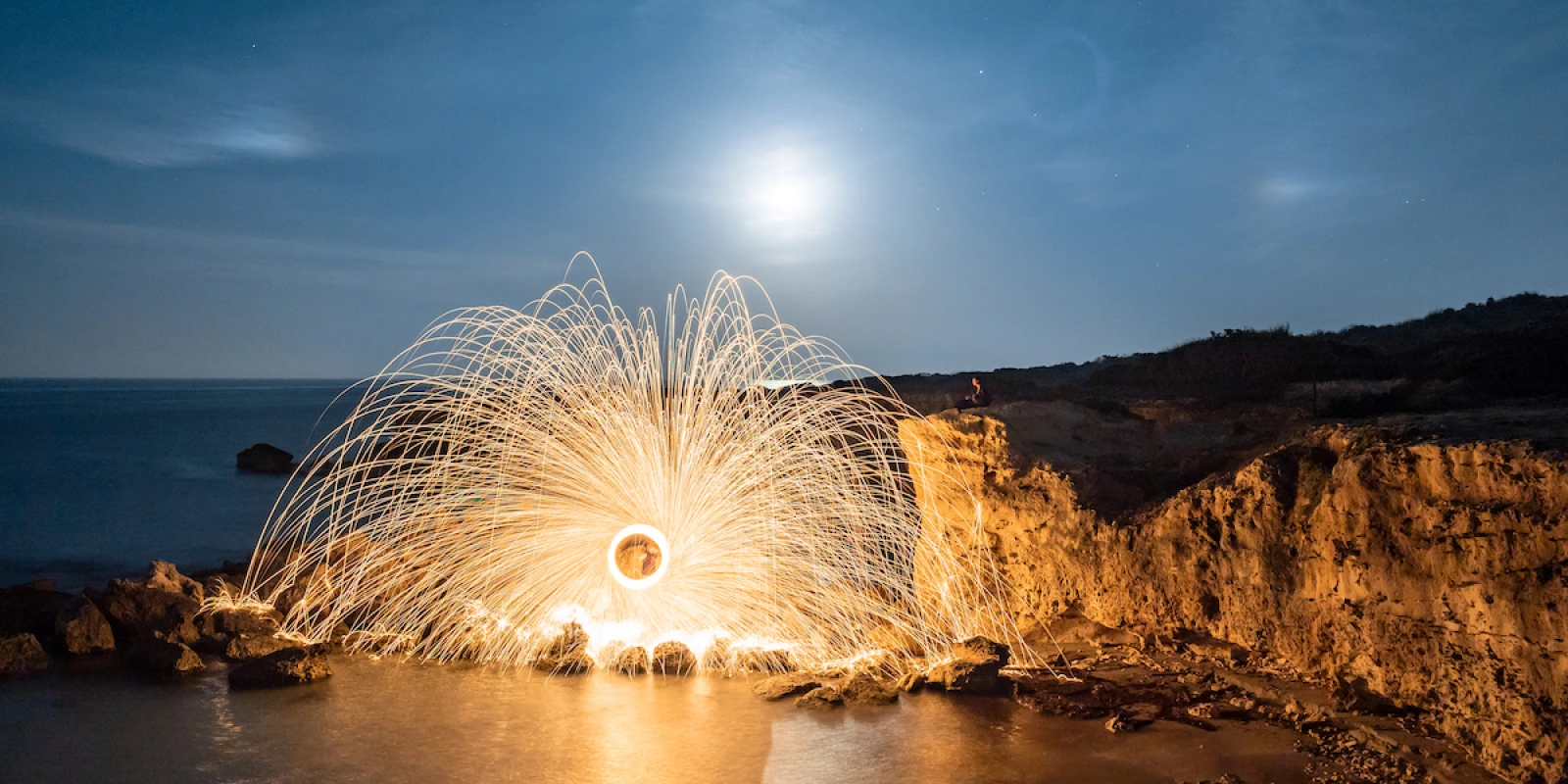
Light-painting with steel wool: the basics
Getting started on how to use steel wool for light painting photos
Light painting is not only led flashlight and light tubes led flashlight and light tubes . Any light source can be the "brush" to create interesting effects in long exposure photos. In this post I introduce the use of steel wool, the steel wool which, if made incandescent and moved properly, generates light trails and a very suggestive light.
What's Steel Wool
It is a metallic filament material, sold in "balls" which is usually used for polishing wood and metal (chromed) surfaces. It can be found in any hardware store in various formats (i.e. the thickness of the filaments). In itself it is not a dangerous element even if it is flammable and I still recommend handling it with protective gloves. Steel wool in photography: contain the risks
Steel wool is flammable, or rather it does not develop flames like a common organic material such as paper, so my warning before starting to use such material is to proceed with caution and take into account that the incandescent filaments, if they end up in contact with something, can trigger a fire.
So, I repeat, be very careful and always calculate the possible risks. When we plan to create photos in light painting with steel wool we always position ourselves in places far away from vegetation, dry grass and even our equipment (camera, batteries) is far away from the place where it is twirled.
You also need to dress appropriately: no fleece sweatshirts or other "hairy" fabrics minimize the risks, just as it would be a good idea to use gloves and protective goggles. Just use a small steel wool pad by placing it inside a kitchen whisk tied to a rope. A rudimentary structure but safe and quick in the set-up between one shot and another. I will be more detailed in the instructions of a next post.
Let's move on to the technical-photographic side. The incandescent steel wool is very bright so to avoid overexposing the photo I tend to set low ISOs and a small aperture so that almost everything is in focus. So generally an ISO 200 and f4 can be fine for an exposure that lasts about ten seconds.
The trigger must start when the person in charge of the steel wool movement is already spinning steadily generating sparks everywhere and must be finished before the complete shutdown to avoid "smudging". In BULB you are never wrong, but even a shot with a preset time is not a bad idea. The raw file will allow you to recover a lot from your very dark resulting photo, without burning the lines of the fiery "vortex" generated by steel wool.
My favorite locations are by the sea (also for safety reasons) in order to take advantage of the reflection of the lights on the water. I hope this introductory post is useful, I will deepen the topic soon.
My recommendation, ok I will be boring but safety first , is to calculate well where the incandescent filaments can end up. Position yourself away from anything that can catch fire, even tens of meters. Calculate the wind and humidity: if it has just finished raining, the risks will be less, just to give a trivial example.